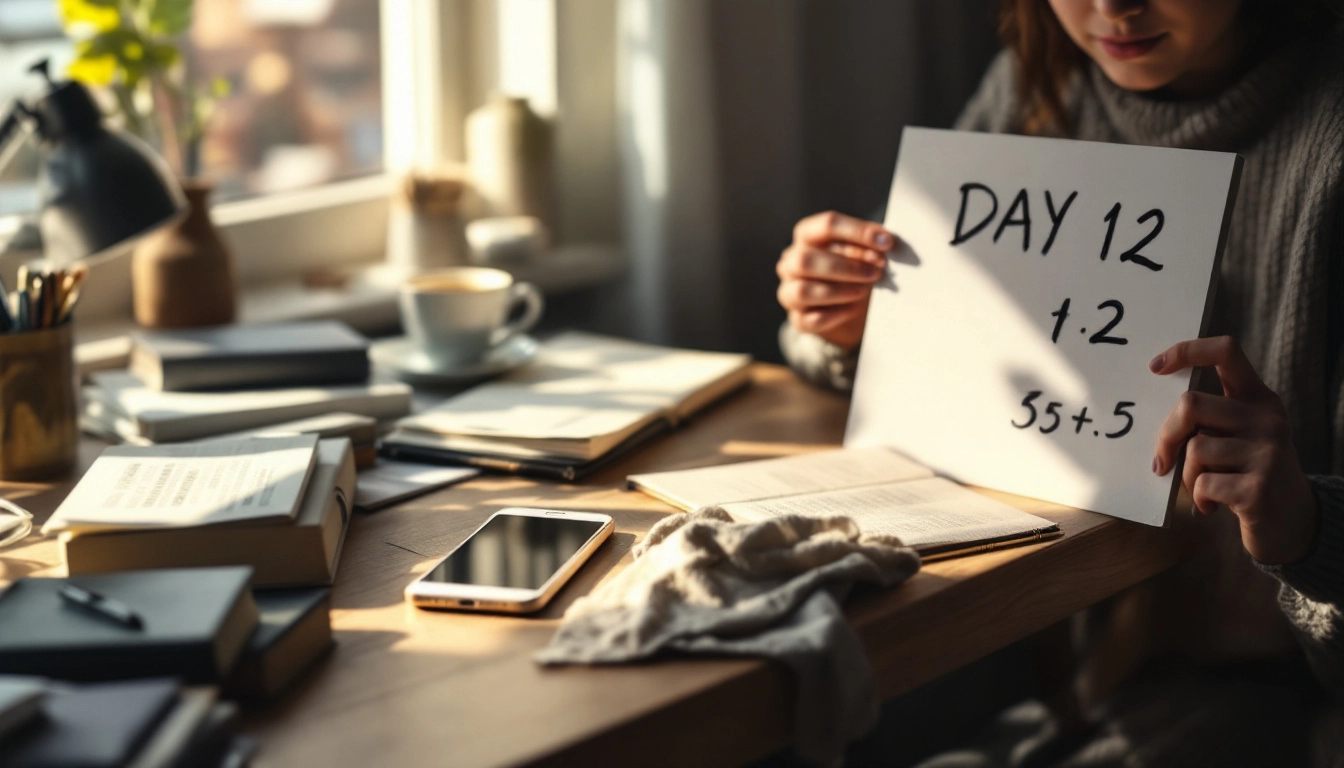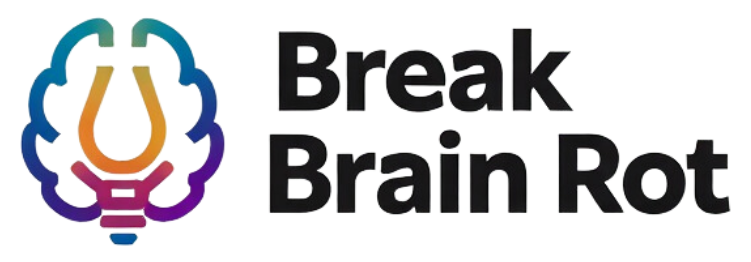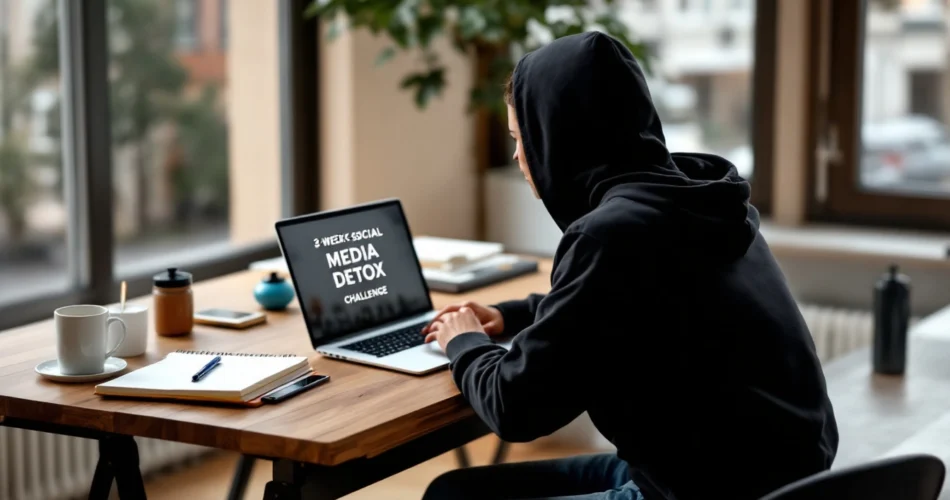Table of Contents
- Why Try a 3-Week Social Media Detox Challenge?
- Preparing for Your 21-Day Social Media Detox Challenge
- Week-by-Week Breakdown of the Social Media Detox
- The Benefits of a Social Media Detox Challenge
- Tips to Stay Consistent During and After the Detox
- FAQs
- Conclusion
Why Try a 3-Week Social Media Detox Challenge?
Understanding “Brain Rot” and Digital Overload
“Brain rot” is the feeling of mental fog, lack of focus, and overstimulation caused by endless scrolling. The quick dopamine hits from new posts, notifications, and infinite feeds train your brain to crave constant stimulation, leaving you distracted when it comes to real life tasks.
The Mental and Physical Impact of Excessive Scrolling
Too much social media can lead to anxiety, poor sleep, and decreased productivity. Studies show excessive screen time is linked to higher stress and even physical symptoms like eye strain and headaches. (Psychology Today)
How a Social Media Detox Rewires Your Habits
When you commit to a structured detox, you give your brain time to rewire. Instead of relying on constant scrolling for stimulation, you build new habits like reading, exercising, or journaling—activities proven to improve focus and reduce stress. (Mental Health Benefits of Reducing Screen Time)

Preparing for Your 21-Day Social Media Detox Challenge
Setting Clear Goals and Intentions
Start by asking yourself: what do I want from this detox? Maybe you want to sleep better, reduce stress, or focus more on work. Identifying clear outcomes will keep you motivated during tough moments.
Identifying Your Biggest Distractions
Which platforms drain your time the most? TikTok, Instagram, YouTube, or Facebook? Deleting these apps or moving them off your home screen makes it easier to resist temptation.
Gathering Tools and Alternatives
Replace scrolling with rewarding habits. Keep a journal, pick up a book, or install productivity apps to help block distractions. Instead of looking at your phone before bed, try stretching, meditating, or listening to calming music. (Harvard Health – Digital Detox Basics)
Productivity Hacks Without Social Media
Week-by-Week Breakdown of the Social Media Detox
Week 1 – Awareness and Reduction
- Track your daily social media usage with built-in screen time tools.
- Set limits via app timers (e.g., 30 minutes a day).
- Notice when and why you reach for your phone—boredom? Anxiety? Habit?
Week 2 – Substitution and Engagement
- Replace scrolling with new habits like journaling, fitness, or learning a new skill.
- Schedule coffee meet-ups or walks with friends to socialize offline.
- Engage in screen-free downtime—cook, listen to podcasts, or enjoy nature.
Week 3 – Reset and Long-Term Integration
- Decide whether to reintroduce social media selectively or continue without it.
- Practice mindful scrolling by following only accounts that uplift or educate you.
- Reflect on the progress you made and create rules for long-term usage.
(Mayo Clinic – The Impact of Screen Time) | (Habit-Forming Strategies to Improve Focus)
The Benefits of a Social Media Detox Challenge
Improved Mental Clarity and Focus
A detox removes “background noise,” freeing your brain to concentrate on meaningful work.
Stronger Emotional Regulation and Reduced Stress
Without constant comparison from social feeds, you’ll feel calmer and more present in daily life.
Improved Sleep, Productivity, and Real-Life Connections
Blue light and late-night scrolling disrupt sleep cycles. Less screen time leads to deeper rest, higher energy, and more meaningful connections offline. (Sleep Foundation – How Screens Affect Sleep)
Deep Work Practices for Better Focus
Tips to Stay Consistent During and After the Detox
Creating Long-Term Healthy Tech Habits
Set daily usage boundaries (like 30 minutes max), turn off unnecessary notifications, and keep your phone out of reach during meals and bedtime.
Accountability Through Journaling and Support Groups
Write down triggers and victories in a journal, or join an accountability group to share progress and stay encouraged.
Balancing Digital Minimalism Without Quitting Entirely
You don’t have to quit social media forever. Adopting a digital minimalism approach means choosing intentional, purposeful engagement instead of mindless scrolling. (Cal Newport – Digital Minimalism Principles) | (Digital Minimalism Lifestyle Guide)
Frequently Asked Questions
What is the difference between a 3-week and a 21-day social media detox challenge?
There’s no difference—they’re simply two ways of saying the same 21-day reset.
Can I still use social media for work during the challenge?
Yes. The key is intentional, purposeful use. You may log in for professional tasks but avoid personal scrolling.
What are some signs that the detox is working?
Improved sleep, better concentration, less anxiety, and more free time are clear indicators your brain is resetting.
How do I handle FOMO during the detox?
Remind yourself that real connections happen offline. Schedule intentional time with friends and family to replace virtual updates.
What should I do if I relapse and start scrolling again?
Don’t be hard on yourself. A slip doesn’t erase your progress. Reflect on why it happened and continue with your plan.
Conclusion
The 3-week social media detox challenge is a powerful way to reset your brain, reclaim focus, and reduce digital overwhelm. Over these 21 days, you’ll learn to replace distractions with meaningful habits, improve your mental health, and build a healthier relationship with technology. If you’re ready to stop feeling drained and start living with intention, commit to your 21-day social media detox challenge today. You have everything to gain—more clarity, energy, and time for what truly matters. Start now and take back control of your mind.

